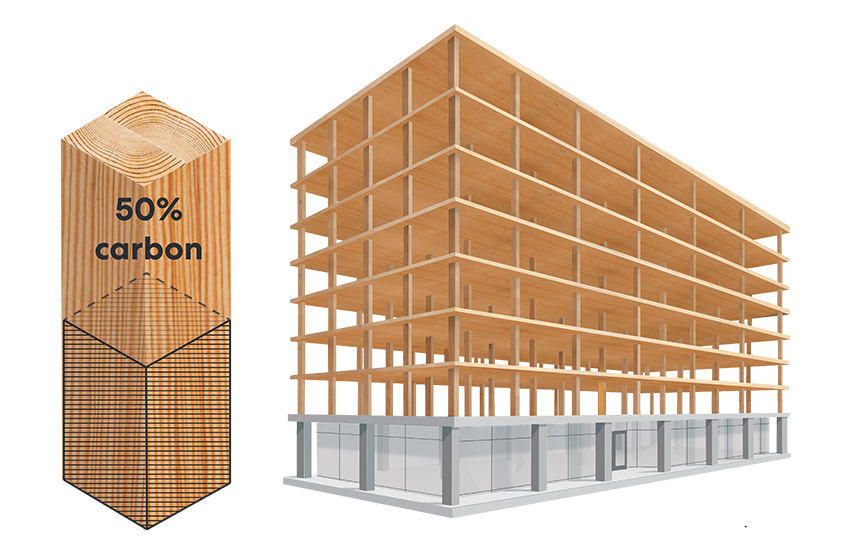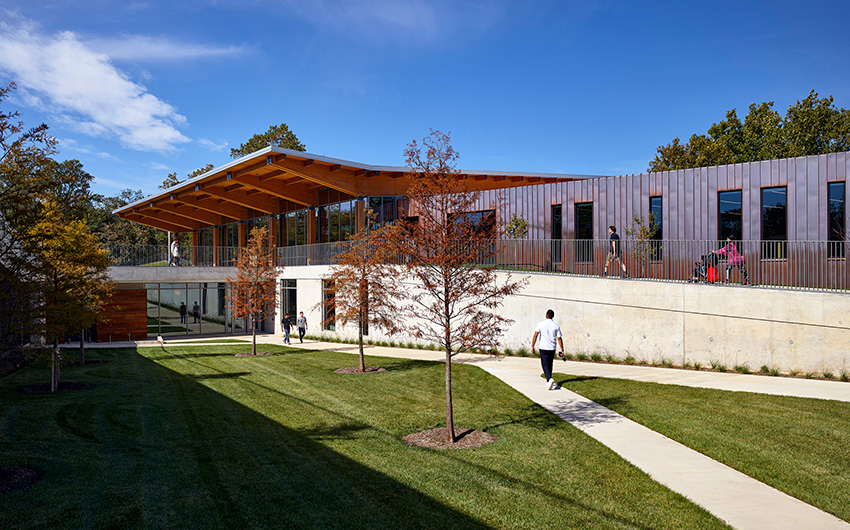Architecting Change: Design Strategies for a Healthy, Resilient, Climate-Smart Future
FROM CARBON SOURCE TO CARBON SINK: REDESIGNING THE BUILT ENVIRONMENT FOR CLIMATE CHANGE
Amidst the urgent need for affordable housing and urban infrastructure, the culminating impacts of a changing climate demand dramatic shifts in how we design and construct our buildings. One important part of the solution—convert the built environment from a significant carbon source to a carbon sink.
The Urgent Need to Lower Building Carbon Footprints
Climate change demands dramatic shifts in how we design and construct our buildings. At the same time, the urgent need for housing and supportive infrastructure continues to surge at record rates. Buildings and their construction account for 39% of global carbon dioxide emissions; 28% of those emissions come from operational carbon—the energy used to power, heat, and cool a building. Buildings’ operational carbon can be reduced through energy efficiency measures, and policymakers, architects, developers, and engineers have made significant advances in this arena. The remaining 11% of carbon emissions are generated from building materials and construction. This “embodied carbon” can account for half of the total carbon footprint over the lifetime of the building.
To reduce the greenhouse gas emissions associated with construction, specifiers and stakeholders need to act now to create embodied carbon strategies that reduce environmental impacts from buildings we’ll use well into the future. The costs of delaying any longer are too high. Greenhouse gas emissions have increased by 90% since 1970. A 1.5% increase in global warming will have catastrophic results for ecosystems and people around the world, including the United States.
Embodied carbon is a priority for many environmental, architecture, and urban planning organizations including C40 Cities, Architecture 2030, Urban Land Institute, and the World Green Building Council. Many experts believe addressing embodied carbon for buildings and building materials is critical to achieving the goals of the Intergovernmental Panel on Climate Change (IPCC) and the 2016 Paris Climate Agreement.
Embodied Carbon in a Building’s Life Cycle
Embodied carbon is determined by conducting a life cycle assessment (LCA) of a product, assembly, or building over declared life-cycle stages. An LCA study returns results for a number of environmental metrics, including the potential to impact climate or “global warming potential” (GWP). Embodied carbon is the GWP result. Embodied carbon is measured for each stage of the product’s life cycle, allowing comparisons across any combination of stages.

Photo courtesy of Think Wood
Wood products are approximately 50% carbon by dry weight.
As buildings become more energy efficient, the upfront embodied carbon from materials begins to account for a higher proportion of a building’s carbon footprint. Very soon, embodied carbon is likely to become the dominant source of building emissions.
Embodied carbon varies dramatically between concrete, steel, and wood, making product decisions key in achieving lower carbon buildings. Manufacturing wood products requires less total energy, and in particular less fossil energy, than manufacturing most alternative materials including metals, concrete, or bricks.











